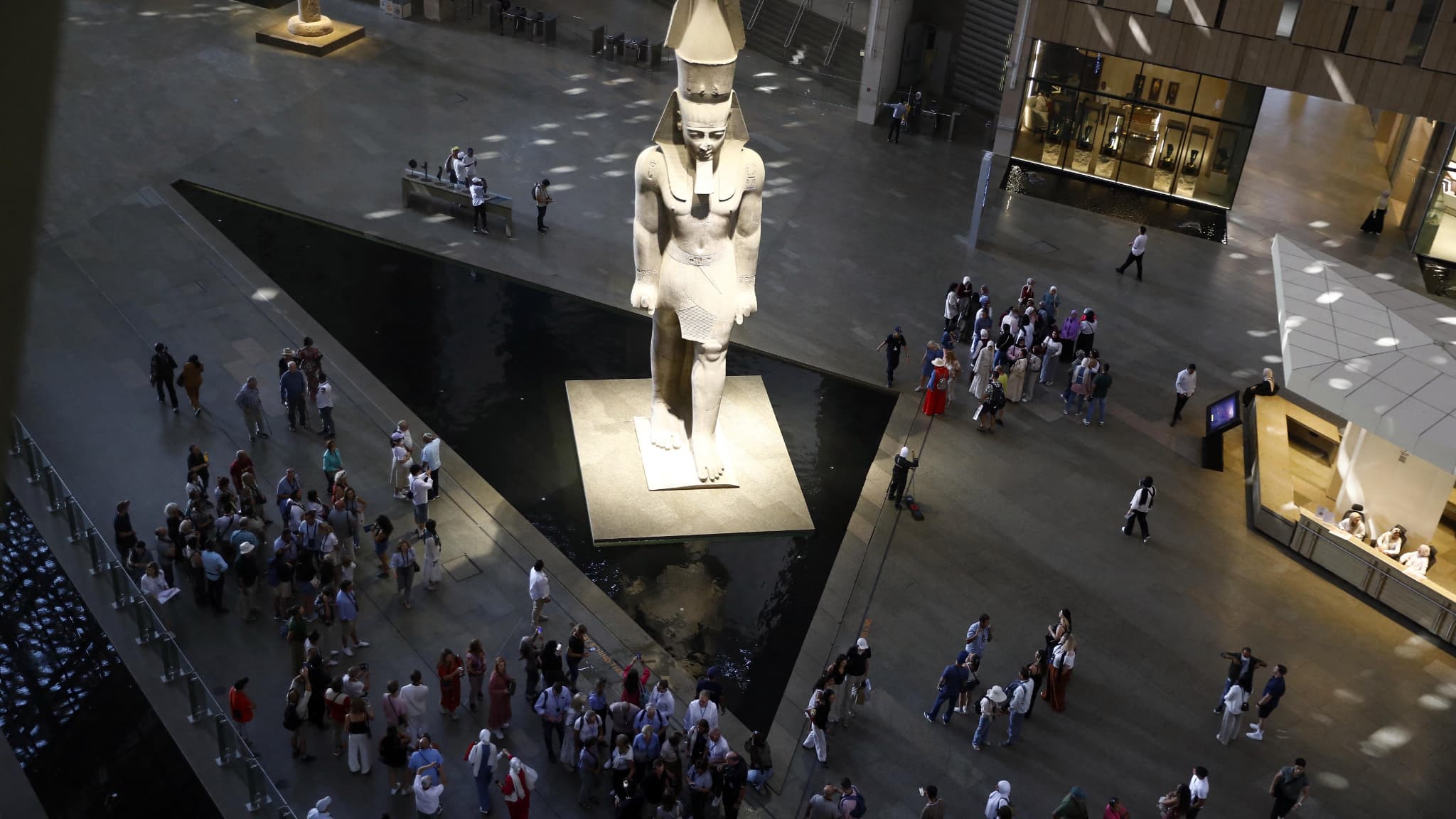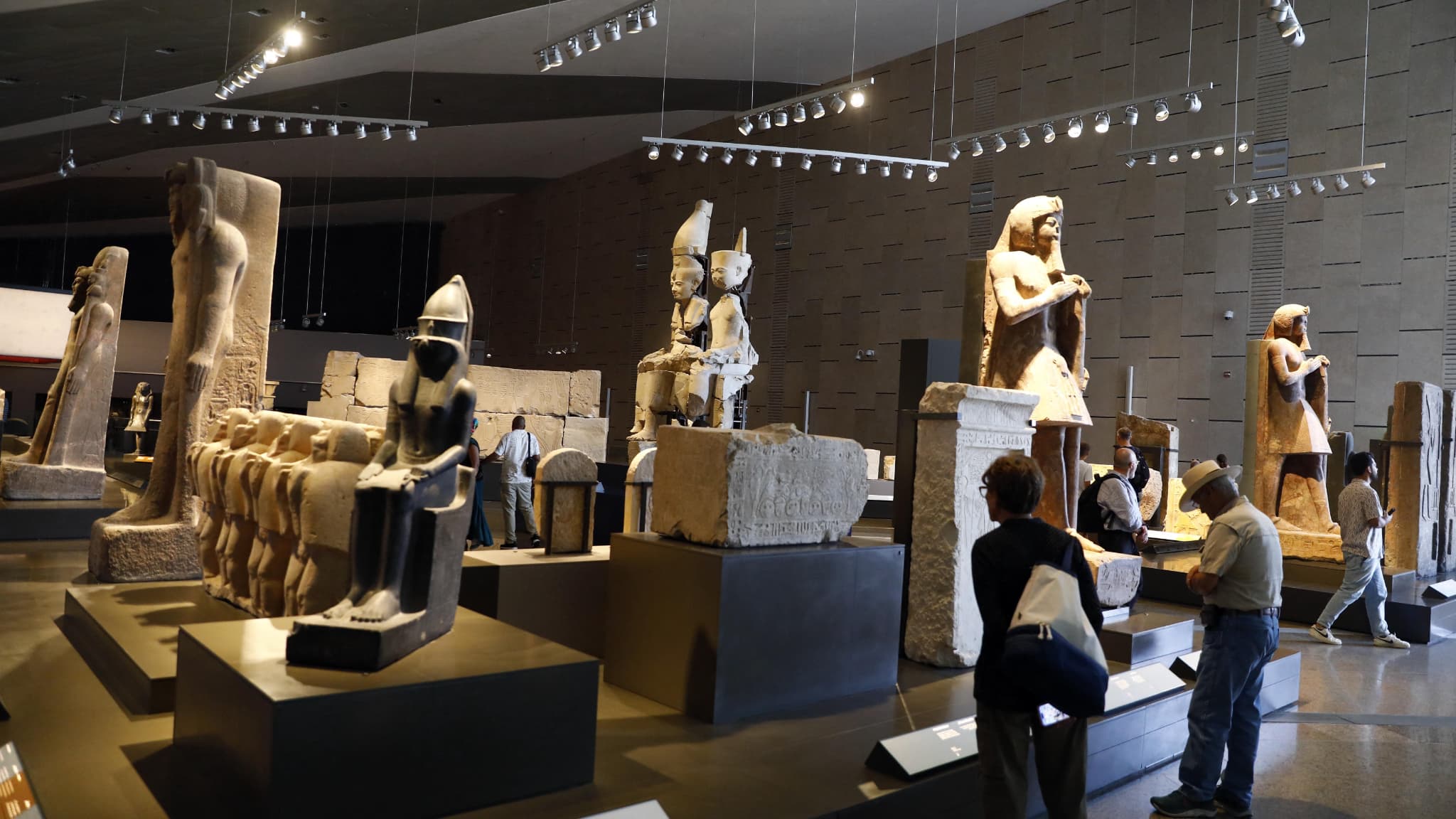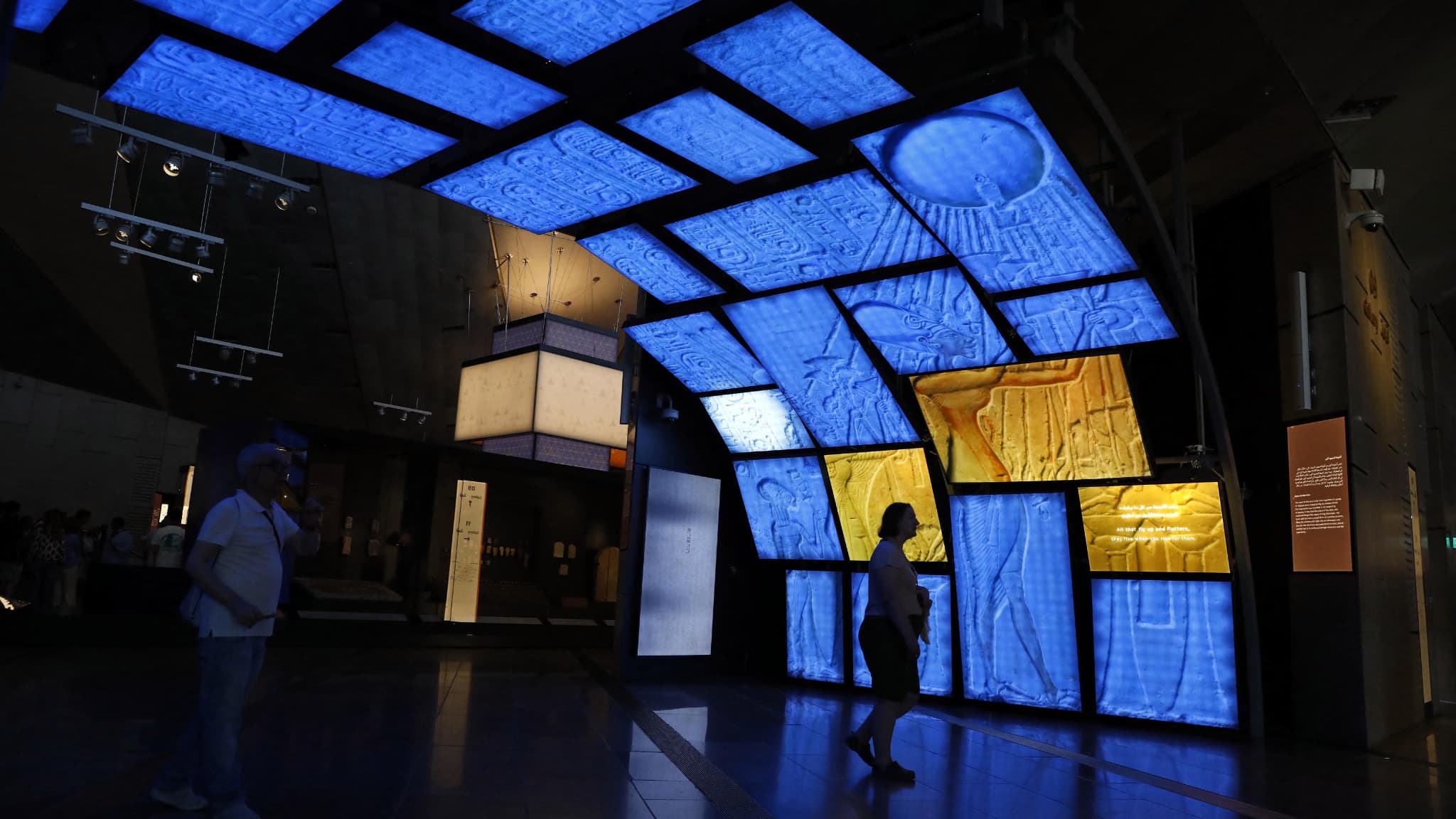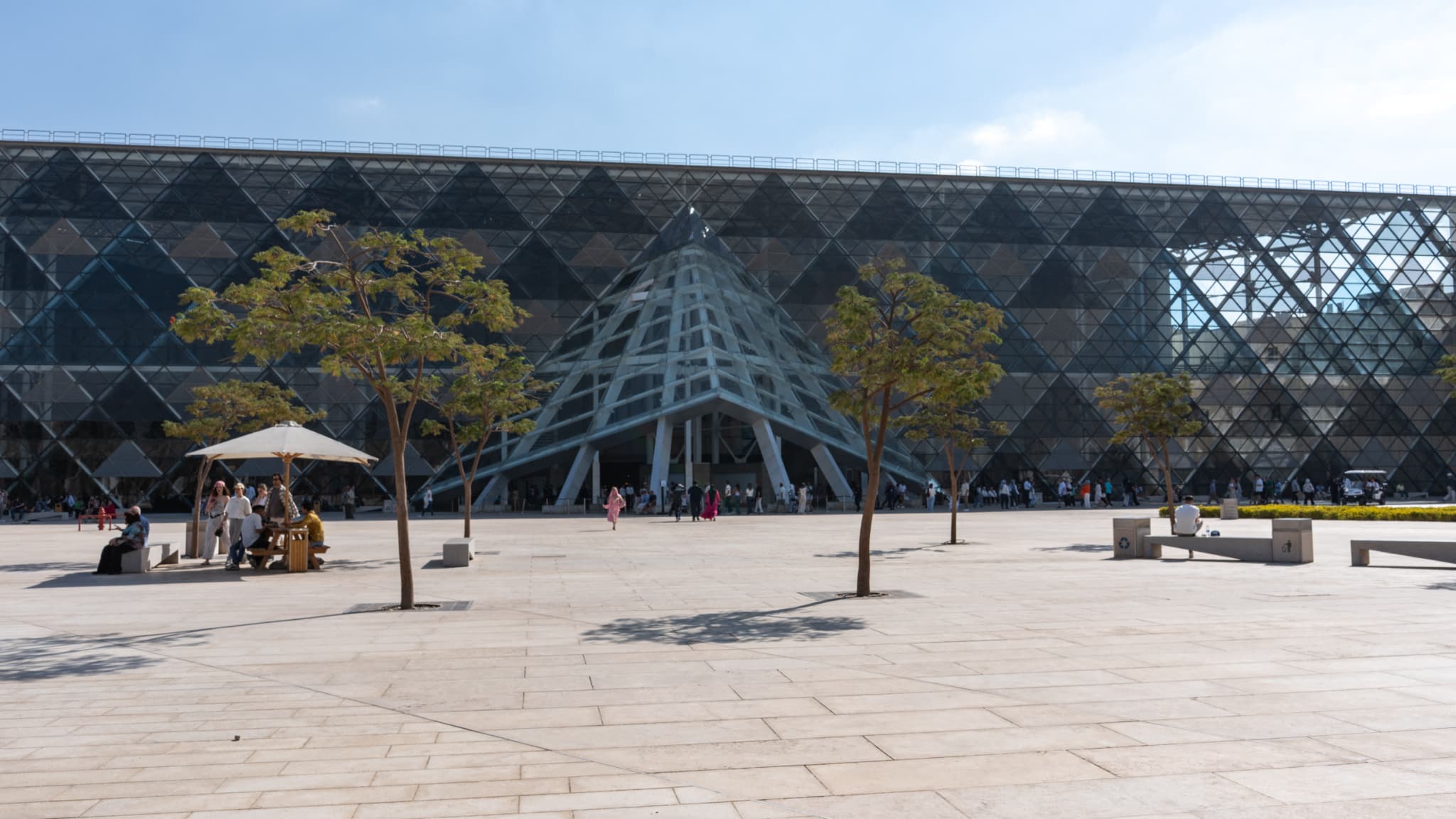After intense preparations and several postponements, the Grand Egyptian Museum (GEM) dedicated to the pharaonic civilization will be inaugurated on Saturday, November 1, with pomp in Cairo, a highly publicized event aimed at celebrating the achievements of power and stimulating tourism.
This monumental museum dedicated to the pharaonic civilization, thirty dynasties over 5,000 years of history with a panoramic view of the pyramids of Giza, cost more than a billion dollars and required twenty years of titanic work.
Five million visitors are expected each year in this contemporary building that brings together emblematic pieces of Egyptian antiquity, sometimes never before exhibited.
Some 80 official delegations are expected for the ceremony, including “40 led by kings, princes, heads of state or government,” according to the Egyptian Ministry of Foreign Affairs.
In line with the vertical communication of Egyptian power, preparations were made in the greatest secrecy and nothing was leaked about the evening’s program, not even about the star attraction of the new museum: Tutankhamun’s treasure, discovered in 1922 in an inviolate tomb in the Valley of the Kings, in Upper Egypt.
A statue of Ramses II weighing 83 tons.
The museum’s most monumental statue, 83 tons of granite and eleven meters high, welcomes visitors in the immense atrium.

Ramses II reigned more than 3,000 years ago (1279-1213 BC). This conqueror and builder is among the most famous pharaohs: his statue made two world tours, with millions of visitors in 1986 and then between 2021 and 2025.
The Grand Museum will be its final resting place after several moves since its discovery in 1820 near a temple in ancient Memphis, south of Cairo. The colossus notably stood in front of the capital’s central station from 1954 to 2006 before being transported with great fanfare near the pyramids of Giza.
An event of “global magnitude”
During the public opening on Tuesday, visitors will be able to discover 4,500 funerary objects of the 5,000 that until now were distributed in various places in the country, including the Egyptian Museum in Tahrir Square, built during colonial times, in the center of Cairo.
In a sign of the national importance of the event, President Abdel Fattah al-Sisi last week led a high-level meeting dedicated to advancing preparations, according to an official statement.
During this meeting, the Head of State insisted on “the need for reinforced coordination to guarantee an opening ceremony worthy of the prestige of Egypt and its role as the cradle of world civilization,” according to the same statement.

“Emphasis was placed on the symbolic dimension of the GEM, called to become a cultural and scientific center of reference on an international scale, contributing to strengthening the tourism promotion of Egypt,” he added.
During a final inspection visit to the site on Tuesday afternoon, Prime Minister Mostafa Madbouli stressed that the event reflected Egypt’s role as a “world leader in the field of culture,” according to another press release.
After several postponements related to the Arab Spring and then the Covid-19 pandemic, the official opening was scheduled for July 3. But the Egyptian authorities preferred to postpone it at the last minute due to regional tensions in order to give the event “the global scale it deserves.” The museum partially opened to the public in October 2024.
15 million tourists since the beginning of the year
To reach a broader audience, the United Media Services (UMS) group, the Egyptian media giant responsible for the event, announced that it had signed a “strategic partnership” with TikTok aimed at “strengthening Egypt’s cultural visibility on the world stage.”

After years burdened by the country’s political instability, then by a series of attacks and finally by the global pandemic of 2020, Egyptian tourism, crucial for the country’s economy, is recovering: revenues represented 14.4 billion dollars in the fiscal year 2023-2024 (+34.6% compared to the previous fiscal period), with a record number of tourists since the pandemic.
The country received 15 million foreign visitors in the first nine months of the year, an increase of 21% compared to the same period of the previous year, with revenues of 12.5 billion dollars (+14.7%), according to official figures. The authorities expect 17.8 million tourists in 2025 and 18.6 million in 2026, thanks to coastal tourism and cultural tourism.
Source: BFM TV


